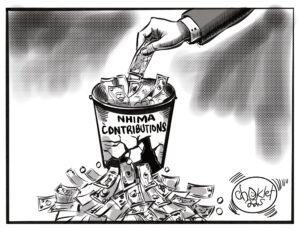This edition attempts to clarify what interest rates are, their types and essence to the broader economy. Interest rates are a very imperative measure of the healthiness of the economy and a key macroeconomic variable that links well with other economic indicators such as exchange rate, inflation, money supply, asset prices, gross domestic product etc.
Interest rate is the amount charged asutilization of money and is stated as a percentage of the principal on a loan or debt. If you’re a borrower, the interest rate is the cost of borrowing money expressed as a percentage of the overall debt volume.But if you are saver, it is the rate of return that you receive on your investment.
There are many ways of expressing interest rates, for instance; nominal, effective and real interest rates. The specified rate on which interest rates are measured is known as the nominal interest rate on an investment or loan. The effective interest rate accounts for compounding over the entire investment period. It’s also used to equate annual interest rates for various compounding periods (daily, monthly, annually, etc.). When contemplating the effect of inflation on nominal interest rates, the real interest rate is useful. The real interest rate is calculated by subtracting the rate of inflation from the average interest rate.
Interest rates are affected by a number of factors, including the central bank’s policy rate, that determines short-term market rates and hence the monetary policy stance. In Zambia, interest rates are also determined by the supply and demand for credit: a rise in the demand for credit raises interest rates, while a fall in the demand for credit lowers them. Of course, this depends on the responsiveness of interest rates to its other determinants.
Furthermore, interest rates on your deposit with banks are determined by a variety of factors such as; the borrower’s risk of default, the payback currency, the country’s credit rating, the number of commercial banks in the country. Additionally, interest rates play many important roles and have a strong effect on the deposit multiplier and, by implication, inflation since they influence how much new bank loan capital circulates in the economy.
Zambians are more likely to borrow money to make large investments, such as starting a business, buying a house or vehicle, if interest rates are low. When citizens pay less interest, they have more money to invest, which will lead to an uptick in overall consumption across the economy.Higher interest rates tend to deter spending because they raise the cost of investing and necessitate a higher rate of return on investment to be profitable.
Generally, interest rates and inflation have a significant opposite relationship. Interest rates are usually low as the economy is growing and inflation is rising. When interest rates are high, however, the economy slows and inflation falls. When there is a spike in inflation, the Bank of Zambiaoften raise their monetary policy rate.Monetary policy rate is a tool adopted by the BoZ to control interest rate payable on very short-term borrowing in the country.
For instance, when the BoZ recently raised monetary policy rate from 8% to 8.5%, commercial banks responded by raising interest rates with an equivalent 0.5%. The expected result is thatfewer customers would borrow money because it is more expensive to do so. As a result, consumption and investments falls, prices fall, and inflation slows. Note that this result is usually effective in the short run when targeting inflation caused by demand pressures.
However, note that higher interest ratesbenefit foreign investors on government securities investors; and depositors on savings and fixed deposit accounts. Unfortunately, in Zambia, it is very difficult to attract savings this way because inflation is so high that it swallows any meaningful gains. Notwithstanding, higher interest rates have a better return to lenders in a given economy as compared to other economies in the face of suitable economic conditions such as low inflation.As a result, higher interest rates lure international investments, driving up the exchange rate. The opposite is true, i.e., lower interest rates tend to lower exchange rates.
From this brief writeup, interest rates are an indispensable macroeconomic variable that influences other key economic indicators especially the price level, exchange rate, investments, government spending and ultimately economic growth in Zambia.
This is it for this week’s edition, stay glued to the next Monday opinion as we discuss government’s proposed recapitalisation of financial and non-financial to reduce interest rates in Zambia.
About the Author: Mr. Boyd Muleyais Head of Research at the Centre for Trade Policy and Development, he is anEconomist and Banker by training, and his areas of interest in research includesMonetary Economics, Financial Markets, Investment Analysisand Financial Inclusion.
























